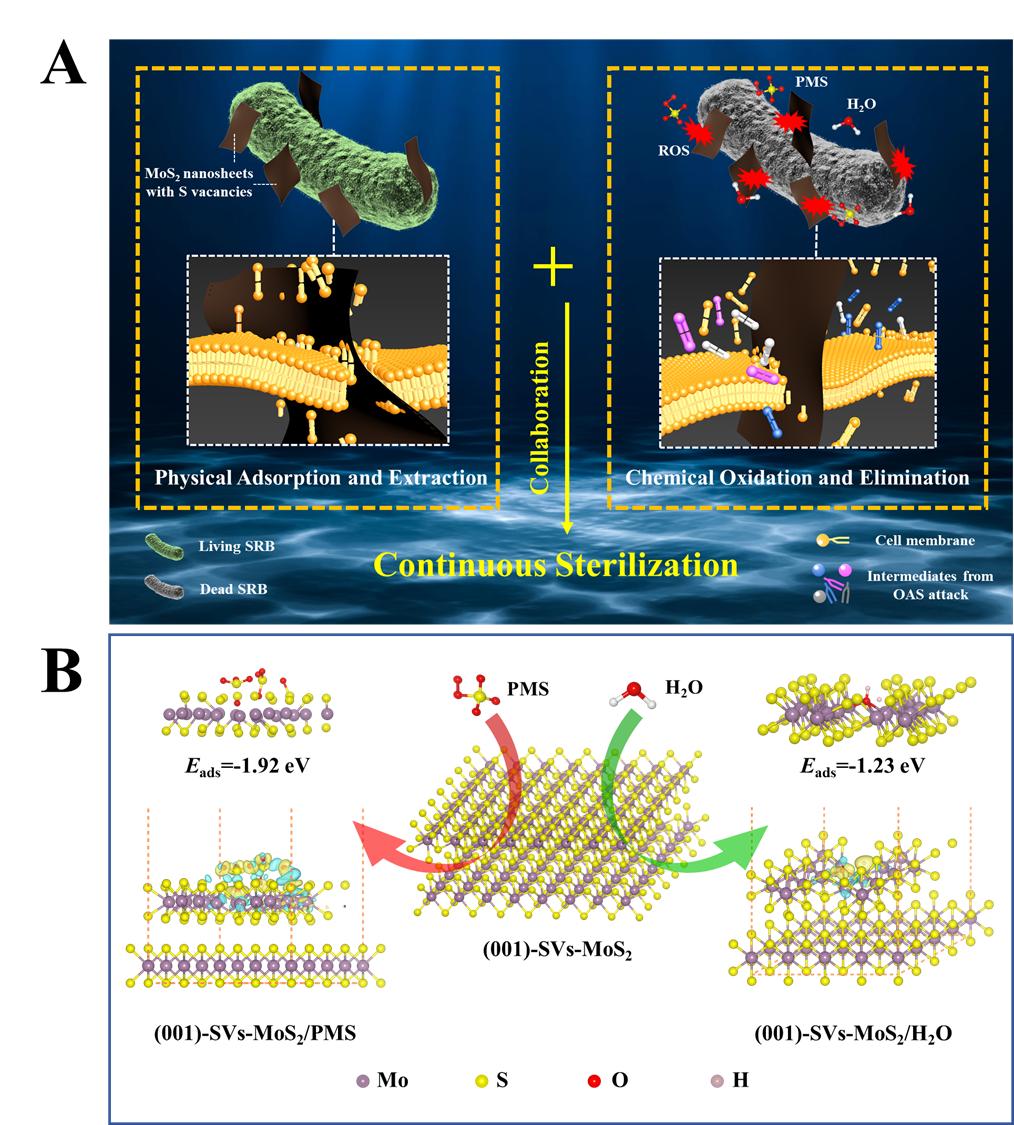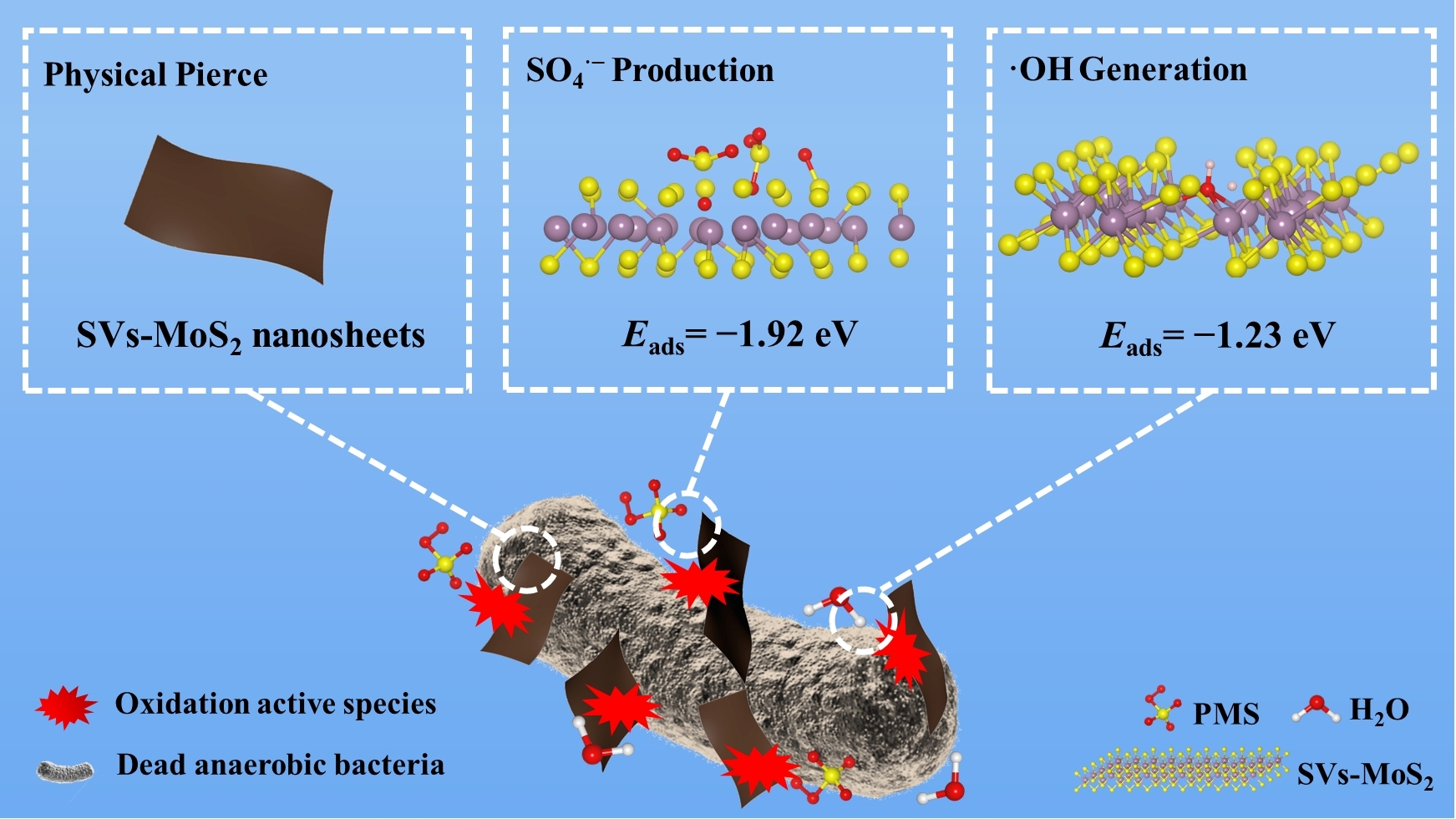Sulfate-Reducing Bacteria (SRB), an anaerobic bacterium, has long been generally considered to be the main culprit in causing corrosion failure of metal materials, which will bring significant impacts and invisible threats to human society.
Previous studies usually used nanozyme as antibacterial materials. However, nanozyme relies on H2O2, O2, superoxide and hydroxyl radicals to produce reactive oxygen species. Therefore, it hinders the utilization in anoxic environments.
Recently, the research team led by Prof. ZHANG Dun from the Institute of Oceanology of the Chinese Academy of Sciences (IOCAS) has found that a MoS2 nanosheets-based vacancy materials activated by permonosulfate enables efficient anaerobic microorganisms disinfection.
The study was published in Journal of Hazardous Materials on August 9.
For physical damage, the negative sulfur of MoS2 can easily bond with hydrophilic heads of lipids, and the edges of MoS2 can act as a "knife" to cut through the cell membrane. Verified by density functional calculations, MoS2 nanosheets can catalyze permonosulfate and H2O to produce oxidation active species (OAS). These OAS could be visualized as "nano killers", which constantly oxidize the lipids around MoS2, re-release the surface of the "sharp knife", and cause cell death.
"With the collaboration of physical injury and chemical elimination, MoS2 features highly exposed active sites and tunable S vacancies (SVs), constructing a platform for boosting the generation of 'nano killers'. The increased production of these free radicals coupled with their close contact with bacteria enabled rapid and stable sterilization in various environments," said WANG Jin, first author of the study.
A rapid and efficient anaerobic bacterial sterilization system with MoS2 nanosheets has been constructed via a synergistic effect between physical damage and chemical oxidation. "This work will no doubt open new horizons on anaerobic bactericidal mechanisms and innovative disinfection strategies," said Prof. ZHANG.
The process of physical extraction collaborated with chemical oxidation not only precisely positions the cell membrane but also allows for continuous sterilization. "This work digs into the mechanism of anaerobic bacterial sterilization, which sheds significant light on biological analysis, antibacterial, cancer therapy, and anti-microbiologically influenced corrosion," said Prof. WANG Yi, the corresponding author.
This research was supported by National Natural Science Foundation of China, High-end Users Program of "Kexue" and Shandong Provincial Marine Science and Technology Projects of 2018.

Fig. 1 (A) Schematic illustration of the continuous anaerobic bactericidal mechanism via physical extraction and chemical oxidation and (B) PMS and H2O adsorption on (001) surface of SVs-MoS2

Fig. 2 The scheme of the collaboration of physical pierce and chemical injury of MoS2 nanosheets
Wang, J., Wang, Y., Ren, WY., Zhang, D. Ju, P., Dou, KP., (2022). "Nano Killers" Activation by Permonosulfate Enables Efficient Anaerobic Microorganisms Disinfection. Journal of Hazardous Materials.
(Text by WANG Jin & Prof. WANG Yi)
Media Contact:
ZHANG Yiyi
Institute of Oceanology
E-mail: zhangyiyi@qdio.ac.cn
(Editor: ZHANG Yiyi)

